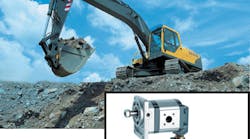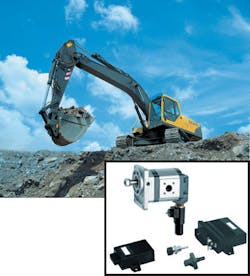Wherever they are used — in mining, construction, agriculture, or over-the-road transport — diesel engines operate most efficiently within a relatively narrow range of temperatures. Not only do diesels obtain highest fuel economy within this temperature range, but they also produce lowest emissions per horsepower as well.
Conventional belt-driven fans are an inexpensive way to cool engines, but they produce a constant load on engine power, which increases fuel consumption. Plus, they allow wide swings in engine operating temperature, which contributes even more to increased fuel consumption.
Cut-out clutches can be incorporated to prevent robbing engine power when cooling is not needed. However, cut-out clutches — and fans driven by electric motors — are either on or off, so the engine still operates within a wide range of temperatures. This is because the fan does not turn on until temperature reaches an upper limit. The fan then stays on until temperature reaches a lower limit.
A hydrostatic fan drive from the Hydraulics technology group of Bosch Rexroth Corp. works in a wide range of ambient temperatures, from -40° to 100° C. It incorporates the new Rexroth F series pump and motor technology. The hydrostatic fan drives can be used in a variety of applications, including construction machines, agriculture and forestry vehicles, and road and rail vehicles.
As with conventional, beltdriven fans, hydrostatic fan drives dissipate heat transferred by engine coolant as it flows through a radiator. The amount of cooling is determined by the fan size, pitch of blades, fan speed, and differential temperature between the ambient air and the coolant.
The controlled hydrostatic fan boasts several advantages over conventional mechanical and electrical systems. Hydrostatic fan drives offer:
- precise control of engine temperature,
- more flexible with regard to the layout of the entire cooling system,
- operation only when required,
- fan speed that is independent of engine speed,
- low hysteresis (small differential between maximum and minimum temperatures),
- easy installation using a compact gear motor with integrated proportional control, and
- high reliability with no need to maintain belts.
For moderate fan outputs of up to 20kW, systems incorporating a fixed-displacement hydraulic pump with bypass control represent the most economical solution. Fan speed automatically increases with an increase in engine temperature. The system automatically reverts to a fail-safe mode (the fan runs at maximum speed) in the event of a control function failure.
For more information, contact John Gormley at (330) 26303434, email [email protected], or click here to view an informative video and downloadable brochure.


